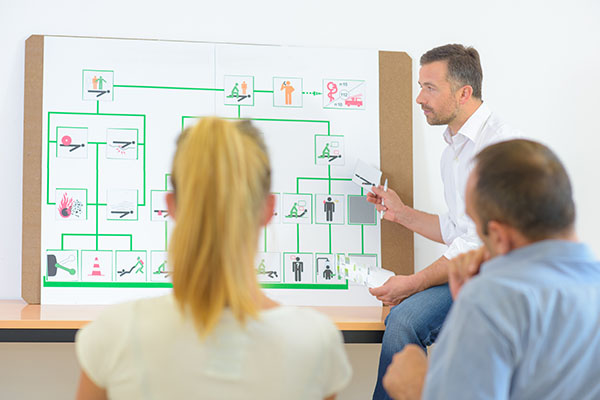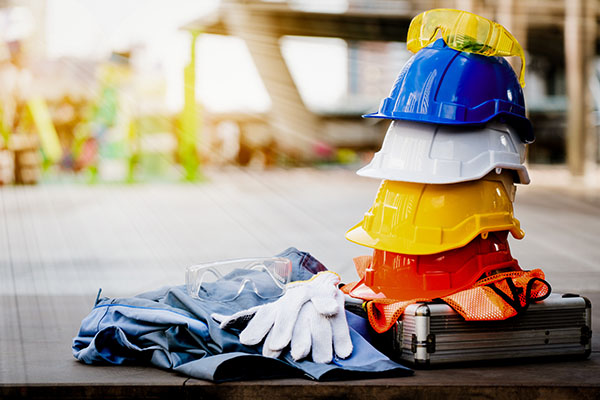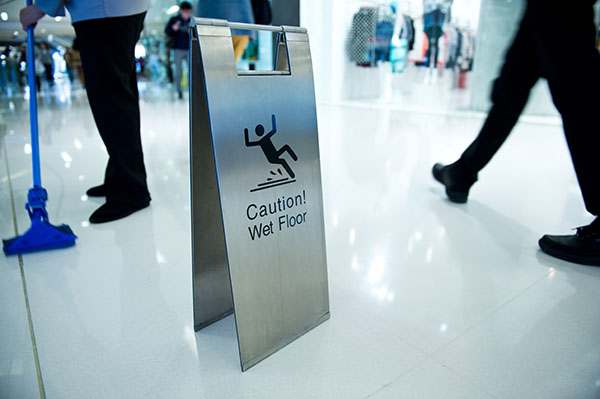Keeping a workplace safe is a lofty goal that should be strived for by all enterprises. It doesn’t matter what size or what type of a business you have. Keeping your business compliant to all health and safety guidelines will go a long way in creating a better business.
Making your business WHS compliant is what you should do to make your workspace a certified safe space to work in. For starters, this may seem like an intimidating task. But it is actually a realistic and very doable goal. Here are 7 key steps in keeping your business WHS compliant.
1. Orient your workforce on safe workplace practices.

Workforce education goes a long way in improving the safety of any workplace. Everyone from the top to bottom of your organization can benefit from improving their knowledge about health and safety. Furthermore, a collective knowledge of these facts improves the health and safety profile of your organization as a whole.
A workplace that is properly oriented of all necessary health and safety protocols is more likely than not to practice them both as individuals and as a complete unit.
Make sure to set a time for workplace health and safety education for your employees at least once a year. It will allow newcomers to learn about the safety practices in your worksite and refresh the knowledge and awareness of the veterans.
You can invite experts to educate your team on proper safety practices. Even something as simple as reorienting everyone about health and safety rules can be highly beneficial. Such learning experiences can go a long way for your company’s safety profile to grow.
2. Create safety signs, lights, and other equipment wherever they are needed.
When properly placed, signs and markers can provide an incredible boost to the health and safety of your workplace. For example, placing warning signs wherever necessary (examples: fire and electric hazards) will deter people from actually going there (unwittingly or otherwise) and get themselves hurt.
Floor markers can also provide directions while also providing warnings for accident-prone areas (examples: slippery floors and low ceilings). Signboards can be used to pinpoint important locations such as fire exits and emergency equipment like first aid kits and fire extinguishers.
Investing on equipment that will provide added safety to your workplace is also a good move. For example, placing better accessibility options such as wheelchair platforms and stairway handles will greatly help overall maneuverability.
Adding emergency lights and glow in the dark markers at strategic parts of your workplace will come in handy when there is a power interruption. Using non-slip floor materials will also greatly improve safety, especially in places that people frequent. Providing for these safety items is money well-spent for any company.
3. Provide safety equipment where necessary

There are specific workplaces wherein having safety equipment is considered a must. Such requirements are necessary in industries wherein performing a certain task poses either an immediate or long-term risk to a patient’s health or safety. Having the right equipment can greatly help in mitigating the risk of death or disability due to performing certain tasks.
In some industries, having specific safety equipment is mandated by law, but providing these tools anyway even if there is no legal impetus to do so is considered good and ethical business practice.
Investing on safety equipment relevant to the nature of the tasks at hand is necessary. Just to give some examples, providing helmets at construction sites, masks when handling noxious chemicals, and full personal protective equipment for those who are handling potentially infectious materials are a must.
Other equipment that are often overlooked but still seriously helpful are protective eyewear for people working on screens for long hours and protective masks for welders. Invest on appropriate safety gear for your team and educate them on how to use these items properly.
4. Establish an ergonomically sound workplace.
Ergonomics as a science has progressed exponentially over the last few years. With science getting better knowledge of how the human body works, experts are starting to use that knowledge to improve how people do things. There used to be a time when injuries and illnesses are common in the workplace, and a lot of them could have been prevented by placing necessary adjustments to certain elements of the workplace. This is where creating an ergonomically sound workplace comes in. A properly designed workplace will not just improve safety, but will also enhance productivity.
Creating an ergonomically sound workplace will take careful planning, and it is highly recommended that it is done with the help of a professional. It first entails a careful evaluation of the workplace, determining which elements can be classified as a hazard risk, an efficiency disruptor, or both.
Once these risk factors are identified, a plan on how they can be resolved is constructed. It may involve replacing some parts of the workplace such as lights and seats. Once the changes are made, a continuous evaluation should be done to see if the changes worked and if further improvements are needed.
5. Perform health and safety drills whenever necessary.
Some may see it as a nuisance, but performing health and safety drills every now and then is essential to keep a workplace safe. Such drills are important because they help orient and re-orient the workforce on what to do when the unexpected happens.
During a calamitous event such as a fire, an earthquake, or a security attack, your people have to be prepared to do what’s necessary. Casualties can be significantly reduced when people know exactly what to do in such situations, which is where the drills come in.
An emergency drill should be done regularly. The bare minimum is once a year, but doing this more often does make sense, especially when there is a quick turnover rate in your workplace. With more new personnel coming into your workplace, it makes sense to keep them informed of your site’s safety protocols.
Ideally, these drills should be led by safety experts, which can provide a detailed rundown of what to do during these high-stress situations. More importantly, make sure to encourage full participation when performing these drills.
6. Create safety protocols for your workforce to follow

Some may think that having a rulebook is just there for technicality reasons, but having one is very important. Creating a safety protocol for your worksite to follow is an essential step in succeeding in a WHS audit. More importantly, it will help in creating a safer workplace for everyone.
Having a safety protocol will provide the guidelines that will be followed at the workplace is an important step in establishing a culture of safety in your company. Of course, for this to be effective, it must be effectively implemented.
When creating a safety protocol, a multidisciplinary approach is recommended for establishing a set of rules that are effective, fair, and encompassing. Initial consultations with all stakeholders are done to determine which elements of the worksite will need some tweaking and which practices will need to be changed.
A consultation with health and safety experts needs to be made to get expert advice on which rules should be added in the workplace. All these ideas would then be integrated to create a complete safety protocol for everyone to follow. All employees should be oriented and given copies of the rules, and a copy can be placed in strategic locations of the site.
7. Have an audit completed by a certified WHS professional
You can perform a lot of improvements in your workplace’s health and safety profile by performing a number of in-house improvements. The first 6 steps are all steps that can be done in-house. However, for your workplace to truly be considered WHS compliant, it is necessary for it to be evaluated with a certified WHS professional.
After all, it is this organization that would have the final say if your business is compliant or not. Including them in the process by having an audit done is the way to do it.
A WHS audit can be done as one big audit or a series of smaller audits that evaluate your worksite in a per-segment basis. Regardless of what approach is used, the overall process is similar. The auditor/s will request a visit to your workplace.
During this visit, they would assess different elements of your workplace health and safety protocols – from the preparedness of your team to the currently present infrastructure on your site. Based on their findings, they can decide if your workplace can get WHS certified and/or provide recommendations on how you can further improve your health and safety systems.
Making your business WHS compliant (and ensuring that it stays that way) takes effort, but it is 100% doable. It will call for you to make some extra steps, but it provides rewards that go beyond getting that certification from WHS.
A healthy and safe workplace creates a better working environment, allowing employees to perform at their top potential with significantly reduced risk of injury or illness. Follow these 7 steps in keeping your business WHS compliant and you are certain to get certified year in and year out.




